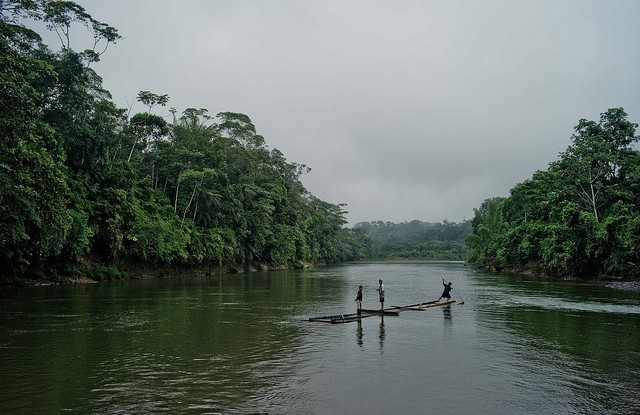
TURRIALBA, Costa Rica (24 October 2013) — An increasingly warmer, drier climate in Central America and Mexico in the next 20 years could negatively affect the region’s biodiversity and ecosystem services, new studies show. This poses unique challenges for farmers, policymakers and governments in the Mesoamerican region, according to research presented at a recent conference in Costa Rica.
“By 2020 or 2030, Central America could find itself in a situation for which there is no historical precedent,” said Pablo Imbach, an agronomist and expert on watershed management at the Tropical Agriculture Research and Higher Education Center (Centro Agronómico Tropical de Investigación y Enseñanza, CATIE). Speaking at the seventh Henry A. Wallace Inter-American Scientific Conference marking the 40th anniversary of CATIE’s founding, Imbach warned that measurements in the region show a steady increase in mean temperature.
Trends in precipitation are less clear, but despite the uncertainty, there is likely to be less water runoff throughout the region, accompanied by a shift away from moist tropical forest species and toward vegetation suited to a drier climate, according to Bruno Locatelli, a forestry and hydrology expert with the Center for International Forestry Research (CIFOR) and with Agricultural Research for Development (CIRAD).
Modeling the interactions between water and vegetation, Imbach and Locatelli found that both the density and the structure of vegetation, ecosystems and ecosystem functions are likely to vary in the future, especially in areas where the treed landscape is replaced by grasslands.
Vegetation and water runoff interact in complex ways, Imbach said. Changes in precipitation, temperature and humidity can change both the density and composition of vegetation. When plants have access to more water, they grow more leaves, transpire (give off vapor) more and reduce runoff. If the soil is drier, they lose leaves or die, allowing more water to run off.
Unlike other studies, the scenarios modeled by Imbach, Locatelli and their colleagues took those interactions into consideration, resulting in more detailed forecasts of likely changes in vegetation in different climate change scenarios.
“We combined 136 different scenarios to determine the likelihood of changes in ecosystem characteristics,” Locatelli said.
For example, by calculating the likelihood of water runoff in this set of scenarios, instead of simply considering average changes, their analysis can help policymakers set priorities to target specific areas in Mesoamerica.
“There may be uncertainty about some aspects of climate change, but we know that in some places, such as the Yucatan [in southeastern Mexico], a decrease in water availability is almost certain with the scenarios we considered,” Locatelli said.
With this knowledge, policymakers there could invest resources in projects and programs to prepare for a drier future. If the likelihood were low, they could set different priorities, Locatelli said.
Understanding the likelihood of different scenarios for local areas can also help local government officials gauge how vulnerable people in those areas will be to climate change and take steps to help them adapt. That requires planning at both the national and local levels, Locatelli said.
Farmers, for example, worry most about the impact of year-to-year variations in temperatures and precipitation on their crops, he said.
Policymakers may take a longer view, but even they do not necessarily perceive climate change as a major threat, according to one CIFOR study.
“We’re talking about impacts that are very likely to occur in the future in Mesoamerica, given our current knowledge of climate change,” Locatelli said. “The results of our work can help national policymakers, project developers and practitioners decide how to adapt.”
For more information on the topics discussed in this article, please contact Bruno Locatelli at b.locatelli@cgiar.org
This work forms part of the CGIAR Research Program on Forests, Trees and Agroforestry and is supported by the MESOTERRA Project of the Mesoamerican Agro-Environmental Program at the Tropical Agricultural Research and Higher Education Center (CATIE).
We want you to share Forests News content, which is licensed under Creative Commons Attribution-NonCommercial-ShareAlike 4.0 International (CC BY-NC-SA 4.0). This means you are free to redistribute our material for non-commercial purposes. All we ask is that you give Forests News appropriate credit and link to the original Forests News content, indicate if changes were made, and distribute your contributions under the same Creative Commons license. You must notify Forests News if you repost, reprint or reuse our materials by contacting forestsnews@cifor-icraf.org.